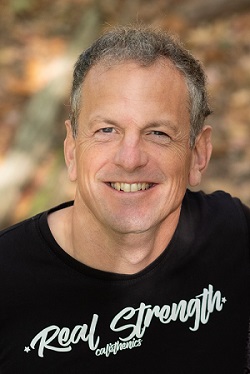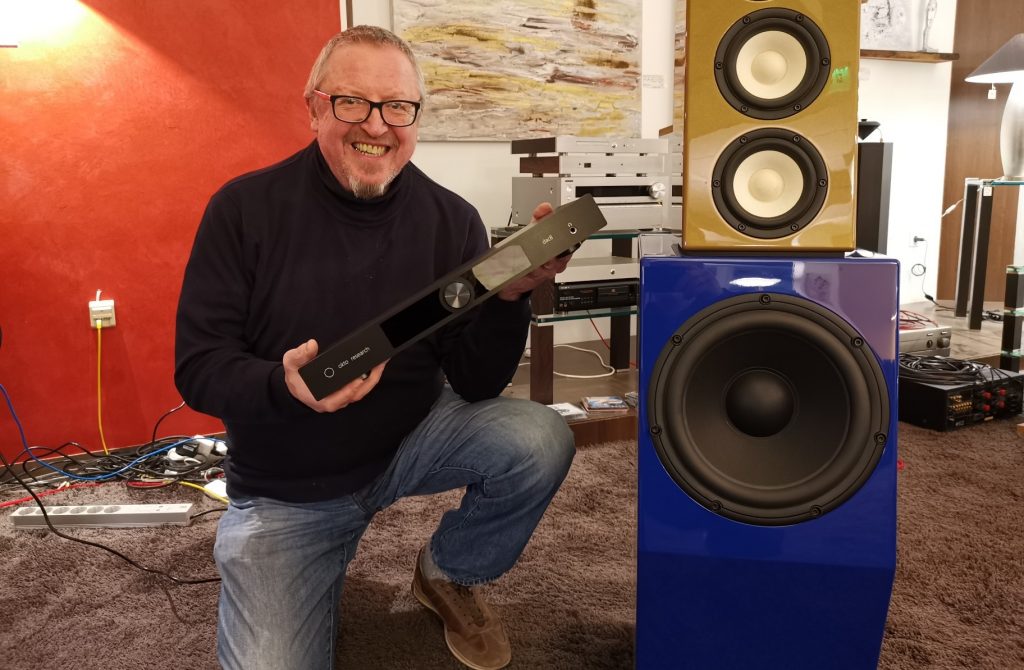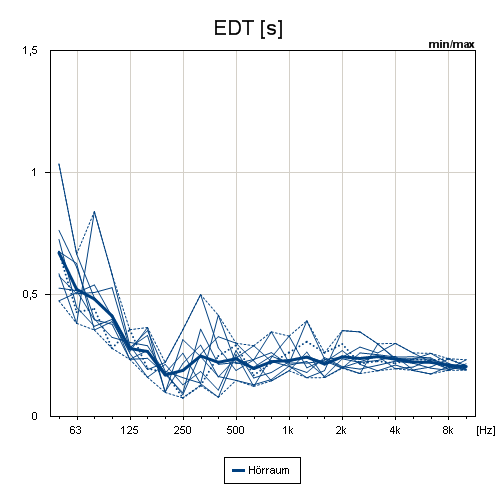About
This website summarizes my personal experience with digital room correction. Digital room correction also known as digital room EQ is a special domain of room acoustics. Here’s a short summary on Wikipedia. I’d like to share my personal experience with anybody who likes to follow the path to maximum performance in sound reproduction in personal listening rooms.
Since my early teenage years I have been a music lover and a Hi-Fi enthusiast. At first I built my own loudspeakers based on various DIY sets. The speakers have always fascinated me. My interest in audio electronics had been really kicked-off when I met a friend, who during those years had introduced his sonically superior pre-amplifiers and power amps. This had been a steep learning curve!

Since my early teenage years I have been a music lover and a Hi-Fi enthusiast. At first I built my own loudspeakers based on various DIY sets.

The speakers have always fascinated me. My interest in audio electronics had been really kicked-off when I met a friend, who during those years had introduced his sonically superior pre-amplifiers and power amps. This had been a steep learning curve!

He also introduced me to Joachim Gerhard, a well known master mind in developing loudspeakers. Joachim had been the founder of the world class speaker manufacturer Audio Physic. His second endeavour was a company called Sonics Audio. His current business is Süsskind Audio.

He also introduced me to Joachim Gerhard, a well known master mind in developing loudspeakers.
Joachim had been the founder of the world class speaker manufacturer Audio Physic. His 2nd endeavour was a company called Sonics Audio. His current business is Süsskind Audio.
Joachim had been the founder of the world class speaker manufacturer Audio Physic. His 2nd endeavour was a company called Sonics Audio. His current business is Süsskind Audio.
Stimulated by my initial contacts, I have developed a strong interest into audio electronics and in particular digital audio electronics. This has led to the joint development of a range of digital-to-analogue converters. The crescendo of this co-operation was the introduction of the well acclaimed CD-Transport. It had got the absolute appraisal of Winfried Dunkel, at that time running his Hi-Fi magazine “Hörerlebnis”. It had also been a great help being supported by Analog Devices with access to first silicon samples and technical competence maximising performance of the digital signal processing chain.
Throughout all those years I have always enjoyed Joachim’s creativity and drive. He is a genius in loudspeaker development. Knowing that a loudspeaker is always a compromise he does understand all technical and aesthetical parameters matching them in a perfect way. Together with Joachim, who had been an advocate of digital loudspeaker development since commercial DSPs became available, I was – among others – introduced to Malcom Hawksford. Malcom was one of the leading scientists in digital signal processing in the world. What Joachim and I had listened to in Malcom’s laboratories at the University of Essex in the early 1990s (a digital version of the Audio Physic Tempo) was mind-blowing – much better than what we had experienced before. Since then, Joachim and I had been in contact about these topics, with me learning a lot from him.
Following my personal interest into sound reproduction, I decided to study both, electrical engineering and economics. After completion of my Masters I have been working in various positions in the audio electronics industry, technical and in management.
Stimulated by my initial contacts, I have developed a strong interest into audio electronics and in particular digital audio electronics. This has led to the joint development of a range of digital-to-analogue converters. The crescendo of this co-operation was the introduction of the well acclaimed CD-Transport. It had got the absolute appraisal of Winfried Dunkel, at that time running his Hi-Fi magazine „Hörerlebnis„. It had also been a great help being supported by Analog Devices with access to first silicon samples and technical competence maximizing performance of the digital signal processing chain.
Throughout all those years I have always enjoyed Joachim’s creativity and drive. He is a genius in loudspeaker development. Knowing that a loudspeaker is always a compromise he does understand all technical and aesthetical parameters matching them in a perfect way. Together with Joachim, who had been an advocate of digital loudspeaker development since commercial DSPs became available, I was – among others – introduced to Malcom Hawksford. Malcom was one of the leading scientists in digital signal processing in the world. What Joachim and I had listened to in Malcom’s laboratories at the University of Essex in the early 1990s (a digital version of the Audio Physic Tempo) was mind-blowing – much better than what we had experienced before. Since then, Joachim and I had been in contact about these topics, with me learning a lot from him.
Following my personal interest into sound reproduction, I decided to study both, electrical engineering and economics. After completion of my Masters I have been working in various positions in the audio electronics industry, technical and in management.

Since the late 90ies I have been engaged more and more in the acoustics of small rooms, which determines dramatically the reality of sound reproduction. In the early years, the passive optimization of acoustics using diffusers such as those build by MB Akustik or Vicoustic helped a lot to improve my listening room. A range of self-built acoustic elements has given me quite a range of experience and in the end a great lifelike sound stage.

Since the late 90ies I have been engaged more and more in the acoustics of small rooms, which determines dramatically the reality of sound reproduction.
In the early years, the passive optimization of acoustics using diffusers such as those build by MB Akustik or Vicoustic helped a lot to improve my listening room. A range of self-built acoustic elements has given me quite a range of experience and in the end a great lifelike sound stage.
With the help of Werner Schwierzock, a professional acoustic consultant, even more had been done to passively optimize the room. Most importantly: I learned a lot on these subjects including lots of trial and error. For improvement i used a variety of software packages such as ARTA, RPlusD, REW and many others. Finally, I learned about Acourate. This is, in my view, by far the most advanced and sophisticated acoustic measurement and optimization toolbox. More on that later.

